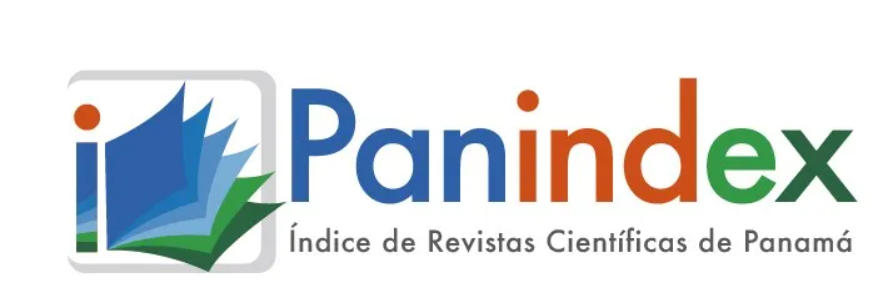The content of the publications and the links suggested in them are the sole responsibility of the authors and not of the METROPOLITAN UNIVERSITY OF EDUCATION, SCIENCE AND TECHNOLOGY (UMECIT) or DIALOGUS magazine. They are protected by international copyright laws as well as the UMECIT and DIALOGUS logos, hence their reproduction is totally prohibited.
This work is licensed under a Creative Commons Attribution-NonCommercial-NoDerivatives 4.0 International License.
The authors maintain the copyright and transfer the right of the first publication to the journal, with the article registered with Creative Commons Attribution-NonCommercial-NoDerivatives License, which allow others They can download the works published in this magazine and share them with other people, as long as their authorship is recognized, but they cannot be changed in any way nor can they be used commercially.
Authors are recommended to include their work in social networks such as Researchgate and institutional repositories once the article or visible fact has been published on the journal page, without forgetting to include the digital document identifier and the name of the journal.



Abstract
The latest results of the external tests carried out in Colombia have revealed a decreasing level of numerical thinking in primary school students. This context promoted the development of this research entitled Strengthening numerical thinking in fourth -grade primary students of an educational institution in the Municipality of Duitama - Boyacá, which was carried out to strengthen numerical thinking in mathematics through the implementation of digital educational resources designed from the gamification approach. For this research, the qualitative methodological model with a Pedagogical Action Research approach developed in three phases was used, in which 14 fourth -grade students of the primary school participated. The results obtained showed that the level of numerical thinking was significantly strengthened, decreasing the number of students who did not reach the minimum required level of performance and increasing the percentage of students at the high and higher level, in the same way, there was improvement in reasoning and solving problems with basic operations, disposition for the class and the motivation of the students.
Keywords
References
Alejandre Biel, L., y García Jiménez, A.M. (marzo 2015b). Gamificar: el uso de los elementos del juego en la enseñanza de español. Mahidol University International College y Sichuan International Studies University, College of International Education. https://acortar.link/3S8ZdD'>https://acortar.link/3S8ZdD
Capell Masip, N., Tejada Fernández, J. y Bosco, A. (Julio de 2017). Los videojuegos como medio de aprendizaje: un estudio de caso en Matemáticas en Educación Primaria. Universidad de Sevilla, España. https://acortar.link/kbMNGc
Castro E. (2008). Pensamiento numérico y educación matemática. Conferencia en XIV Jornadas de investigación en el aula de matemáticas. Granada. https://nanopdf.com/download/conferencia-pn-universidad-de-granada_pdf
Cornella, P., Estebanel, M., & Brusi, D. (2020). Gamificación y aprendizaje basado en juegos. Consideraciones generales y algunos ejemplos para la enseñanza de la geología. Enseñanza de las ciencias de la Tierra, 28 (1), 5-19. Revistas catalanas con acceso abierto. https://acortar.link/S1St8F
Hernández Sampieri, R. (2014). Metodología de la investigación: las rutas cuantitativa, cualitativa y mixta (6ta Ed.). Mc Graw Hill. https://acortar.link/4hqOE
INTEF (Instituto Nacional de Tecnologías Educativas y de Formación del Profesorado). (s.f) Evaluar recursos educativos. https://intef.es/recursos-educativos/educacion-digital-de-calidad/une-71362/
Martín, J. (marzo de 2021). Recursos educativos digitales. Smile and learn: https://smileandlearn.com/mejores-recursos-educativos-digitales/
McIntosh, A., Reys, B. J. y Reys, R. E., (1992). A Proposed Framework for Examining Basic Number Sense. For the Learning of Mathematics 12, 3. FLM Publishing Association, White Rock, British Columbia.
Ministerio de Educación Nacional (2012). ¿Qué son los recursos educativos digitales y cuáles son sus ventajas? https://colombiaaprende.edu.co/agenda/actualidad/recursos-educativos-digitales-usos-y-ventajas
Ministerio de Educación Nacional. (1998). Lineamientos curriculares en matemáticas. https://www.mineducacion.gov.co/1621/articles-89869_archivo_pdf9.pdf
Montaña Cadena, Ana., Pérez Aguirre, A., Torres Merchán, N., (2018). Aproximaciones teóricas sobre el desarrollo del pensamiento numérico en educación primaria. Educación y ciencia, 19, 107 - 125. https://revistas.uptc.edu.co/index.php/educacion_y_ciencia/article/view/7771/6155
Montes, A., Moscote, C. & Vergara, L. (2023). Fortalecimiento de la escucha de estudiantes de secundaria como habilidad esencial en la comunicación en la lengua inglesa, dinamización y mediaciones con Blended Learning. Revista Saber, Ciencia y Libertad, 18(1), 299 – 323. https://doi. org/10.18041/2382-3240/saber.2023v18n1.10109
Restrepo Gómez, B., (2004). La investigación-acción educativa y la construcción de saber pedagógico. Educación y Educadores, (7), 45-55. https://www.redalyc.org/comocitar.oa?id=83400706
Rivera Díaz, Ana Gabriela (2 de diciembre de 2021). Recursos educativos digitales y su importancia en la educación del siglo XXI. Lucaedu,com. https://acortar.link/RncjaU
Rodríguez García, S., Herráiz Domingo, N., Prieto de la Higuera, M., Martínez Solla, M., Picazo Zabala, M., Castro Peláez, I.., y Bernal Escámez I. (2011). Investigacion Acción. Archivo PDF. https://acortar.link/b2dkCw
Sabino, Carlos (1992). El proceso de la investigación. Editorial Panapo. https://acortar.link/dev
Salinas, Núñez, C. (2016). Desarrollo de recursos digitales didácticos mediante herramientas web 2.0 para la enseñanza-aprendizaje de introducción a la comunicación académica en el sistema nacional de nivelación y admisión. Tesis de Maestría, Universidad Católica del Ecuador. https://acortar.link/teUPLX
Sánchez, C. (2019). Orígenes y evolución de la investigación cualitativa en Educación. Ludomedia. https://acortar.link/vVnILA
Downloads
Publication Facts
Reviewer profiles N/A
Author statements
- Academic society
- Universidad Metropolitana de Educación, Ciencia y Tecnología
- Publisher
- Universidad Metropolitana de Educación, Ciencia y Tecnología




















